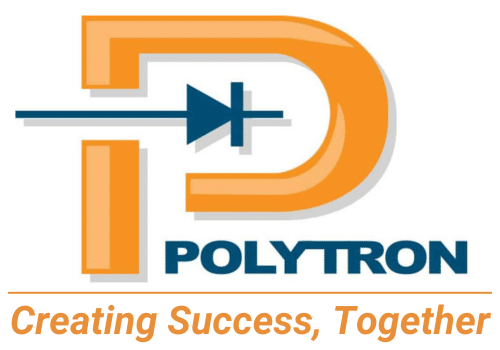To meet a goal of zero fatalities and make sure plant floor workers are safe from harm each day, companies must build a sustainable machinery safety program.
Establishing a safe machine state and creating a sustainable machinery safety program requires a risk and hazard evaluation of every piece of energized equipment.
After assessing risks, machines were upgraded to include new safety features, and operators were trained to ensure the safety upgrades delivered the intended outcome. While minimizing downtime, equipment risks were significantly reduced by creating isolated safety zones for efficient operation and guarding new software, safety-rated components, and technology to successfully execute the machine safety project.
Challenge |
Solution |
Results |
| Risk and hazard evaluation of every piece of energized equipment for this global brand to reach goal of zero fatalities. | Conduct risk assessment and machine survey on all equipment
Determine KPIs Establish machine safety systems designed to lower risk scores Create safety standards that can be applied across all plants Use best practices to lower palletizer risk scores without inhibiting equipment performance |
Polytron successfully reduced equipment risk in the palletizer area to levels specified by the company’s safety team while minimizing downtime and continues to execute machine safety projects identified in the risk assessment. |
The Project
 Plant Floor Safety
Plant Floor Safety
Making sure workers on the plant floor are safe from harm each day is one of the biggest challenges, but knowing where to start and how to build a sustainable machine safety program is often a daunting task. Accomplishing this large project requires a team and a plan.
Starting with Machine Safety Standards
When a global manufacturer’s sustainability program established the goal of zero fatalities, the company’s environmental health and safety (EHS) VP realized he needed to start from scratch. That meant evaluating every piece of energized equipment – including all machine hazards and risk factors – in all the company’s facilities across the globe.
Working with his newly dedicated safety team, they launched a risk assessment and machine survey which covered thousands of pieces of equipment in the manufacturer’s plants.
Challenge 1: Minimize Downtime Needed to Install Patches System-Wide
The IT group was focused on fulfilling its mandate, but OT production leaders had their own concerns in meeting production goals. Having the IT group send a team to each plant with instructions to shut it down for a day or more, so they could patch computers, would not be positive for morale or revenue.
The IT group would need a plan for minimizing downtime with a persuasive way to communicate the plan to get the production teams on-board.
Risk Assessment to Plant Floor Safety
With KPIs and risk assessments in place, the manufacturer’s EHS VP and the dedicated safety team faced the challenge of applying their findings to create the results they sought. They needed a certified safety engineering solution partner to join the team to translate their goals into applied machine safety systems that would lower risk scores.
For the manufacturer’s local plants, they selected Polytron as their solution partner. The project started with the highest risk machines and a plan to work down the list of machines by level of risk severity to the company’s workforce.
Highest Risk: The Palletizer
Polytron developed a functional specification for the manufacturer’s high risk palletizer assessment. The specification enabled the machine safety team to not only lower the hazard level on each risk, but to ensure changes did not inhibit the performance of the machine, supporting a subsidiary goal of the safety project: minimizing downtime.
The machine safety engineering approach delivered a consistent machine safety system based on standards. This enabled the manufacturer to apply machine safety modifications faster across the plant, further reducing downtime
Project Specification
- Apply standard control software components, provided by the customer, including state machine and PLC program templates, and standard HMI faceplates
- Add technology as an enabler: Safety-rated components such as safety PLCs, contractors, switches (interlocks), VFDs, light curtains, door switches, e-stop push buttons, and safety rated sensors
- Create isolated safety zones to more efficiently operate and maintain equipment
Training to Support Machine Safety Modifications and Continuity of Performance
Since a machine that has been upgraded with new safety features should be approached as new equipment, operators need technology transfer training and documentation to ensure safety upgrades deliver intended outcomes.
For example, with isolated safety zones, operators no longer need to stop the impacted process to remove a blockage. The new manuals and specialized safety training provided by Polytron helped operators understand the new practices and prevented unnecessary downtime that would be caused by needlessly shutting down equipment to access a jam.
Successful Palletizer Machine Safety Upgrade
The manufacturer relied on Polytron for guarding new software, safety-rated components and technology, and creating isolated safety zones for efficient operation and maintenance. The result was equipment risk levels in the palletizer area being reduced to the levels specified by the company’s safety team.
Today, the company continues to rely on Polytron to execute machine safety projects identified in the risk assessment as the company’s EHS program progresses and other upgrades arise based on capital improvements involving targeted equipment.
With Polytron as a partner, the EHS VP has made substantial improvements toward the company’s goal, reporting zero fatalities for the year. With new safety guidelines in place, the company is fully committed to returning all employees, contractors, and visitors safely to their families every day
Machine Safety Program Implementation
Sustainable machine safety programs improve workforce safety, ensure equipment is operating within safety standards and help to consistently meet production goals. A program can be implemented at any point in your safety plan:
- Developing a safety initiative roadmap helps you effectively create or improve plant safety
- Taking action on completed risk assessments lowers your risk
- Reaction to incidents or near misses call for audit and assessment to proactively address and identify risks and hazards
Program Benefits
A Machine Safety Program can increase your facility’s productivity and profits.
- Work productively while minimizing your operators risk of injury
- Reduce unexpected downtime with fewer disruptions as a result of safety standards and technology prevention
- Enable design flexibility and provides increased diagnostics
- Increase likelihood that Standard Operating Procedures will be followed
- Makes machinery safer and easier to operate and maintain
- Company safety standards ensure that new equipment is installed with compliance already built in
- Documentation on upgraded equipment is provided for maintenance and operators
The Machine Safety Program helps protect your people, assets and productivity. It creates an environment of safety and peace of mind with consistent standardized safety processes and safe equipment.




